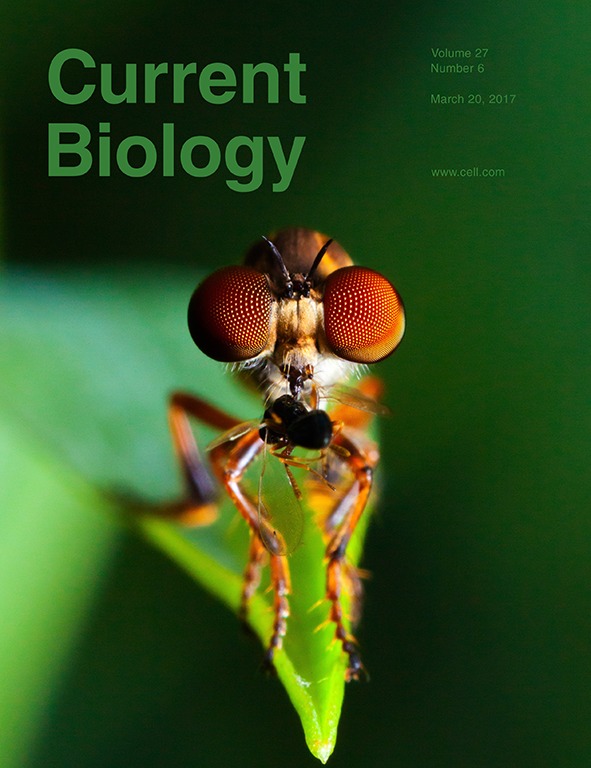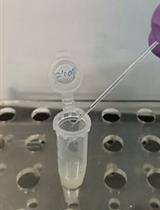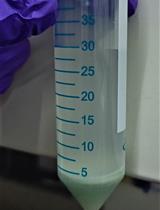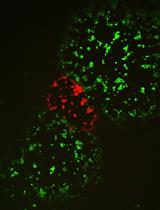- EN - English
- CN - 中文
Infection of Caenorhabditis elegans with Vesicular Stomatitis Virus via Microinjection
水疱性口炎病毒通过显微注射感染秀丽隐杆线虫
发布: 2017年11月20日第7卷第22期 DOI: 10.21769/BioProtoc.2617 浏览次数: 8833
评审: Peichuan ZhangSuprabhat MukherjeeAnonymous reviewer(s)
Abstract
Over the past 15 years, the free-living nematode, Caenorhabditis elegans has become an important model system for exploring eukaryotic innate immunity to bacterial and fungal pathogens. More recently, infection models using either natural or non-natural nematode viruses have also been established in C. elegans. These models offer new opportunities to use the nematode to understand eukaryotic antiviral defense mechanisms. Here we report protocols for the infection of C. elegans with a non-natural viral pathogen, vesicular stomatitis virus (VSV) through microinjection. We also describe how recombinant VSV strains encoding fluorescent or luciferase reporter genes can be used in conjunction with simple fluorescence-, survival-, and luminescence-based assays to identify host genetic backgrounds with differential susceptibilities to virus infection.
Keywords: Vesicular stomatitis virus (水疱性口炎病毒)Background
Given its genetic tractability, small size, inexpensive culture, and transparent body, the free-living nematode Caenorhabditis elegans offers many advantages as a model organism. Furthermore, the susceptibility of C. elegans to a wide range of human bacterial and fungal pathogens has made the worm an attractive system for studying microbial pathogenesis (Zhang and Hou, 2013; Cohen and Troemel, 2015). More recently, the discovery of the positive-sense ssRNA Orsay virus (OV) as the first natural viral pathogen of C. elegans has prompted the use of the OV-C. elegans model to define nematode antiviral defense mechanisms (Felix et al., 2011; Gammon, 2017). These studies have demonstrated a clear role for nematode antiviral RNA interference pathway components, such as Dicer-related helicase 1 (DRH-1), in the restriction of virus replication (Ashe et al., 2013).
To complement the OV model system, we recently reported the generation of a new virus-C. elegans model that uses the negative-sense, ssRNA vesicular stomatitis virus (VSV) (Gammon et al., 2017). Infection of wild-type (N2) worms with VSV is lethal although mutants defective in antiviral responses (e.g., drh-1 mutants) succumb to infection more rapidly (Gammon et al., 2017). Therefore, one can use lifespan assays as a convenient phenotypic readout when comparing different worm backgrounds for virus susceptibilities. Furthermore, the use of recombinant VSV strains encoding fluorescent reporters facilitates the scoring and tracking of infection in C. elegans tissues in real-time (Gammon et al., 2017). In addition, infection of worms with firefly luciferase-encoding VSV recombinants allows one to score virus replication using simple and quantitative luminescence assays (Gammon et al., 2017). Finally, the current study of VSV in a broad range of other model organisms (e.g., Drosophila, mice, etc.) provides the opportunity to examine VSV interactions with multiple invertebrate and vertebrate hosts. Here we describe how to establish VSV infection in C. elegans and use simple fluorescence and luminescence-based assays to track infection with the goal of uncovering nematode genetic backgrounds with differential susceptibilities to infection.
Materials and Reagents
- Personal protective equipment (gloves, lab coat, eye protection)
- Tissue culture dish, 150 x 25 mm (Corning, catalog number: 430599 )
- 50 ml conical tubes (Corning, catalog number: 431472 )
- Tissue culture dish, 6-well (Corning, catalog number: 3516 )
- 9” disposable borosilicate glass Pasteur pipets (Fisher Scientific, catalog number: 13-678-20C )
- FisherfinestTM Premium cover glasses (50 x 35 mm) (Fisher Scientific, catalog number: 12-548-5R )
- Glass needle, single capillary, 1.2 mm x 4 in. (102 mm) (World Precision Instruments, catalog number: 1B120F4 )
- Kimwipes (KCWW, Kimberly-Clark, catalog number: 34155 )
- Beckman Ultra-Clear ultracentrifuge tubes (Beckman Coulter, catalog number: 344058 )
- Eppendorf MicroloaderTM 20 µl pipette tips (Eppendorf, catalog number: 930001007 )
- 1.5 ml tube (VWR, catalog number: 20170-333 )
- 96-well plates (Corning, catalog number: 3915 )
- Modeling clay (Nasco, catalog number: 0300257M )
- C. elegans N2 strain (Caenorhabditis Genetics Center)
- Recombinant vesicular stomatitis virus encoding fluorescent marker gene [e.g., VSV-dsRED (Duntsch et al., 2004)] and/or firefly luciferase [e.g., VSV-LUC (Cureton et al., 2009)]
- Bacterial Escherichia coli strain OP50 (Caenorhabditis Genetics Center)
- Baby Hamster Kidney (BHK-21) cell line (ATCC, catalog number: CCL-10 )
- Vero cell line (ATCC, catalog number: CCL-81 ) or BSC-40 cell line (ATCC, catalog number: CRL-2761 )
- Methyl cellulose (Sigma-Aldrich, catalog number: 19-2930 )
- Crystal violet staining solution (Yamada and Takaoka, 2017)
- Crystal violet (Sigma-Aldrich, catalog number: C6158 )
- Agarose (Fisher Scientific, catalog number: BP160-500 )
- Microinjection oil (Series 700 Halocarbon oil) (Sigma-Aldrich, catalog number: H8898 )
- Reporter lysis buffer 5x (Promega, catalog number: E3971 )
- Luciferase Assay Reagent (Promega, catalog number: E1483 )
- 6.0% sodium hypochlorite solution (Fisher Scientific, catalog number: SS290 )
- Potassium hydroxide pellets (KOH) (Fisher Scientific, catalog number: P250 )
- Dulbecco’s modified Eagle’s medium (DMEM) (Sigma-Aldrich, catalog number: D6429 )
- Fetal bovine serum (FBS) (Atlanta Biologicals, catalog number: S12450 )
- Antibiotic-antimycotic solution, 100x (Sigma-Aldrich, catalog number: A5955 )
- L-Glutamine, 100x (Mediatech, catalog number: 25-005-CI )
- MEM nonessential amino acids (Mediatech, catalog number: 25-025-CI )
- NGM plates (He, 2011a)
- 5-Fluorodeoxyuridine (FUdR) (Sigma-Aldrich, catalog number: F0503 )
- 50% (w/v) polyethylene-glycol (PEG) 3000 (Rigaku Reagents, catalog number: 1008056 )
- M9 buffer (He, 2011a)
- Acetic acid (Fisher Scientific, catalog number: A38 )
- Methanol (PHARMCO-AAPER, catalog number: 339000000 )
- Formaldehyde (Fisher Scientific, catalog number: BP531-500 )
- Fixation solution (Yamada and Takaoka, 2017)
- Bleach solution (see Recipes)
- Complete DMEM (see Recipes)
- NGM + [50 µg/ml] FUdR Plates (see Recipes)
- M-PEG (see Recipes)
Equipment
- 37 °C cell culture incubator with 5% CO2 (Eppendorf, model: Galaxy® 170 S )
- Type 2 Biosafety cabinet (NuAire, model: NU-425-400 )
- Refrigerated benchtop centrifuge (e.g., Eppendorf, model: 5810 R ) with swinging bucket rotor capable of holding 50 ml conical tubes (e.g., Eppendorf, model: A-4-62 )
- Ultracentrifuge (e.g., Beckman Coulter, model: OptimaTM LE-80K ) with Beckman SW28 rotor (Beckman Coulter, model: SW 28 Ti )
- Refrigerated microcentrifuge (e.g., Southwest Science, model: SC1024-R )
- 50 °C water bath (e.g., VWR, model: 89501-468 )
- 80 °C oven (Gruenberg, model: CG45V240SS )
- Needle Puller (NARISHIGE, catalog number: PN-30 ) with Platinum board 3 mm filament (NARISHIGE, catalog number: PN-3H )
- Dissecting stereomicroscope (e.g., Nikon Instruments, model: SMZ745 )
- Refrigerated incubator capable of maintaining 15 °C (Sheldon Manufacturing, Shel Lab, model: SRI20 )
- Incubator capable of maintaining 25 °C (Sheldon Manufacturing, model: Model 2005 )
- Fluorescence stereo zoom microscope with dsRED and GFP filters (e.g., ZEISS, model: Axio Zoom.V16 )
- -80 °C freezer (VWR, model: VWR40086A )
- Bioruptor® II Type 12 (Cosmo Bio, model: Bioruptor2 Type 12 , catalog number: TOS-BR2012A)
- Envision 2102 Multilabel Reader (PerkinElmer, catalog number: 2105-0010 )
- Platinum Wire for worm pick, 30 gauge 0.254 mm diameter (Genesee Scientific, catalog number: 59-30P6 )
- Worm pick handle (Genesee Scientific, catalog number: 59-AWP )
- Autoclave (e.g., Getinge, model: 633LS )
- Air Table (e.g., Kinetic Systems, model: VIBRAPLANE )
- Compressed Nitrogen Tank (for connection to air table and microinjector unit) (e.g., Airgas, model: CGA-580 , catalog number: NI-NF300)
- Microinjector Unit (e.g., Eppendorf, model: FemtoJet® 5247 )
- Inverted microscope (e.g., Carl Zeiss, model: Axiovert 200 )
- Micromanipulator (e.g., Eppendorf, model: PatchMan 5173 )
- Micromanipulator controller (e.g., Eppendorf, model: 5171 )
Software
- Wallac EnVision Manager software for Envision 2102 Multilabel Reader (version 1.12)
- GraphPad Prism (v.6.0c, GraphPad Software Inc.)
Procedure
文章信息
版权信息
© 2017 The Authors; exclusive licensee Bio-protocol LLC.
如何引用
Martin, A., Rex, E. A., Ishidate, T., Lin, R. and Gammon, D. B. (2017). Infection of Caenorhabditis elegans with Vesicular Stomatitis Virus via Microinjection. Bio-protocol 7(22): e2617. DOI: 10.21769/BioProtoc.2617.
分类
微生物学 > 体内实验模型 > 病毒
免疫学 > 动物模型 > 其它
您对这篇实验方法有问题吗?
在此处发布您的问题,我们将邀请本文作者来回答。同时,我们会将您的问题发布到Bio-protocol Exchange,以便寻求社区成员的帮助。
提问指南
+ 问题描述
写下详细的问题描述,包括所有有助于他人回答您问题的信息(例如实验过程、条件和相关图像等)。
Share
Bluesky
X
Copy link












